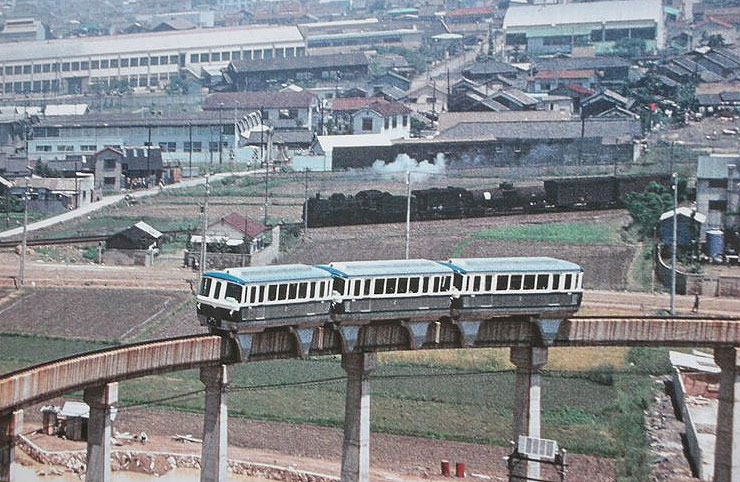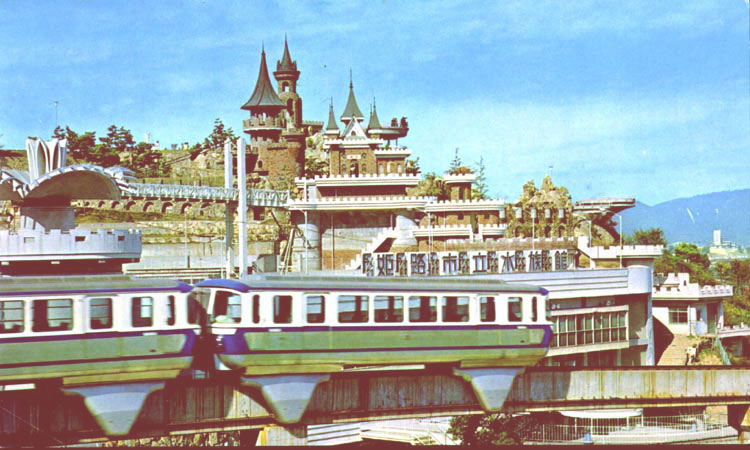Lockheed Monorail
by Kim Pedersen
page three of three
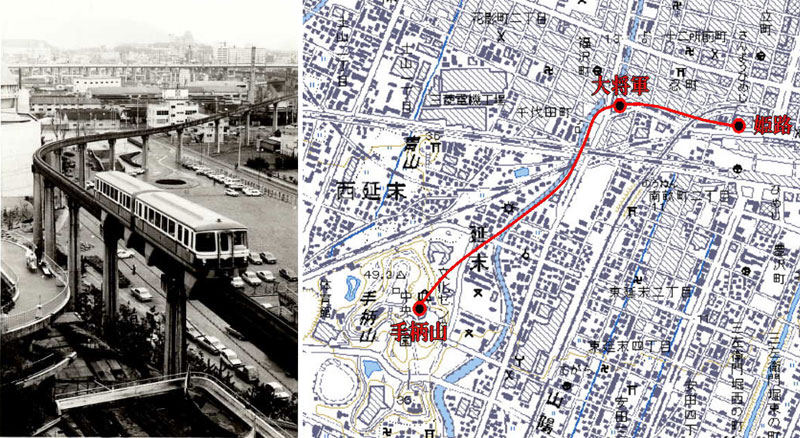
Mukogaoka Monorail was the Lockheed Monorail that lasted the longest, for 35 years from 1966 to 2001. Also opening in 1966, another Nihon-Lockheed Monorail went into operation in Himeji, Japan. Running from a station across from Himeji's main rail station, the single-beam one-mile shuttle line ran to and from Tegarayama Central Park with one intermediate stop.
. 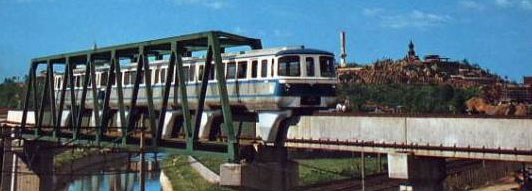
One interesting point along the route was a trestle bridge built exclusively for the Himeji Monorail to cross a major rail line.
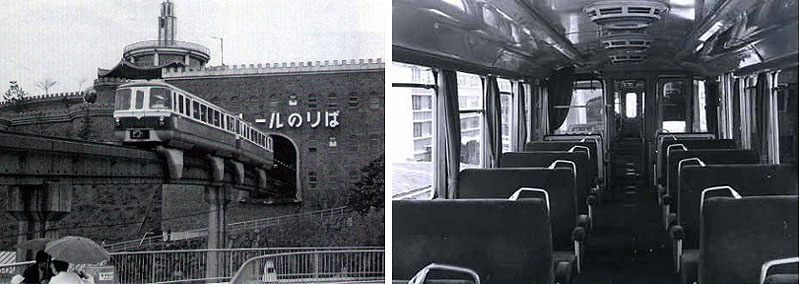
Tegarayama station was located in a castle-like structure on top of a hill. The monorail carried an average of 1,000 passengers per day in its first year, about one third of what was anticipated. Two years later, ridership dropped to only 700 per day. Interest payments and operating losses mounted and by 1970 the Mayor of Himeji proposed closure of the line. Some support was garnered for track extensions to Himeji Castle to the north, as well as the city's ship terminal to the south, yet neither was to be. Lockheed's withdrawal from the monorail business didn't help the cause.
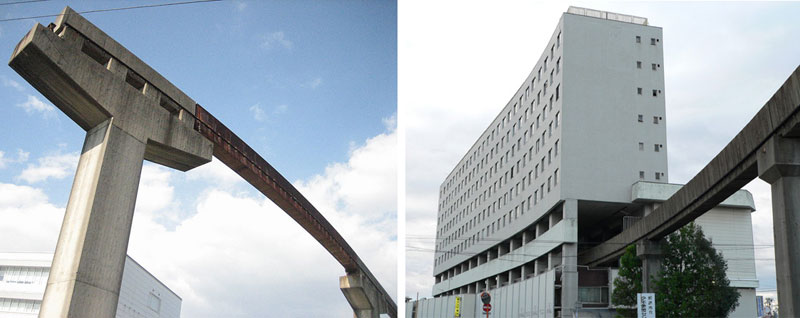
Operations were suspended in 1974 and decommissioning came in 1979. As of this writing (12/13/09), several portions of track remain in place, including the intermediate stop of Daishogun Station. Daishogun's in-building station 1966 opening pre-dated Walt Disney World's famous in-building Contemporary Resort station by five years.
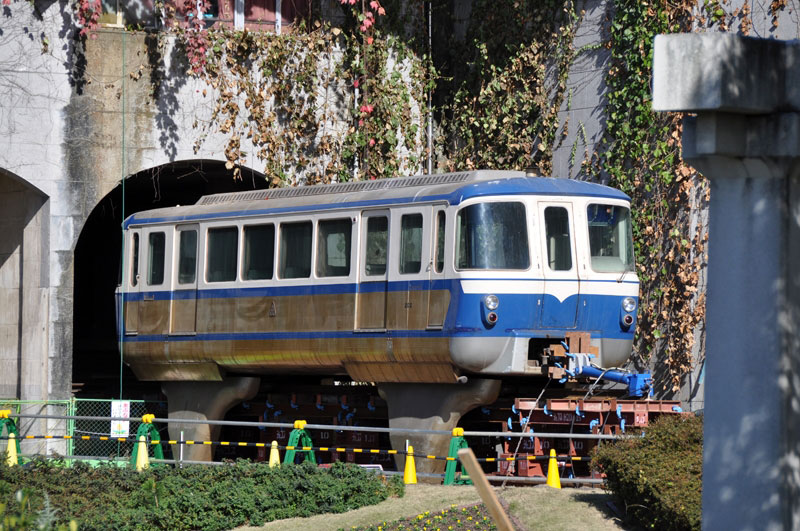
After closing in 1974, the monorail train cars remained sealed inside the old Tegarayama station. On November 15, 2009, one of the cars went on public display for the first time in 35 years.
(photo by Ryoji Wada)
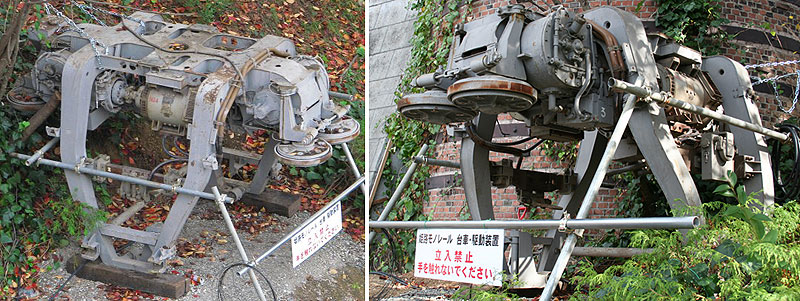
The special day included the opportunity for visitors to have a close look at one of the Lockheed Monorail bogies.
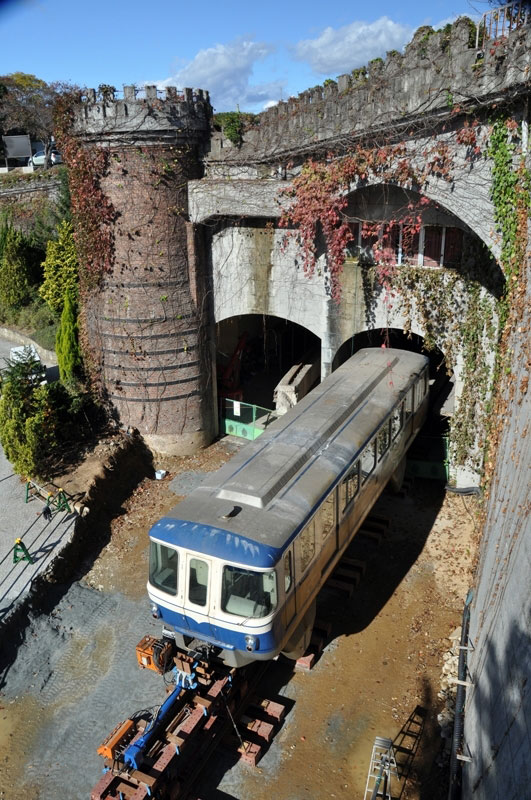
A temporary guideway was built on the back side of the station to allow the car to see daylight again.
(photo by Ryoji Wada)
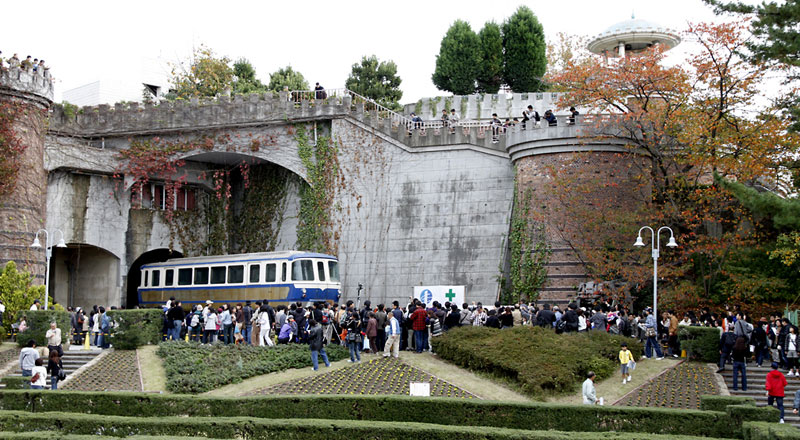
Normally a quiet garden, throngs of interested citizens and rail fans flocked to see the historic train during the event. The car depot/terminal station is currently closed to the general public as it is being converted into a museum for a 2011 opening.
While Lockheed's Monorail is only an interesting footnote today, circumstances in the early 1960s might have resulted in more important lines featuring the technology. However, judging from this writer's bumpy ride experience in Mukogaoka in 1990, perhaps it's not such a bad thing for monorail.
Lockheed Monorail Special one / two / three
